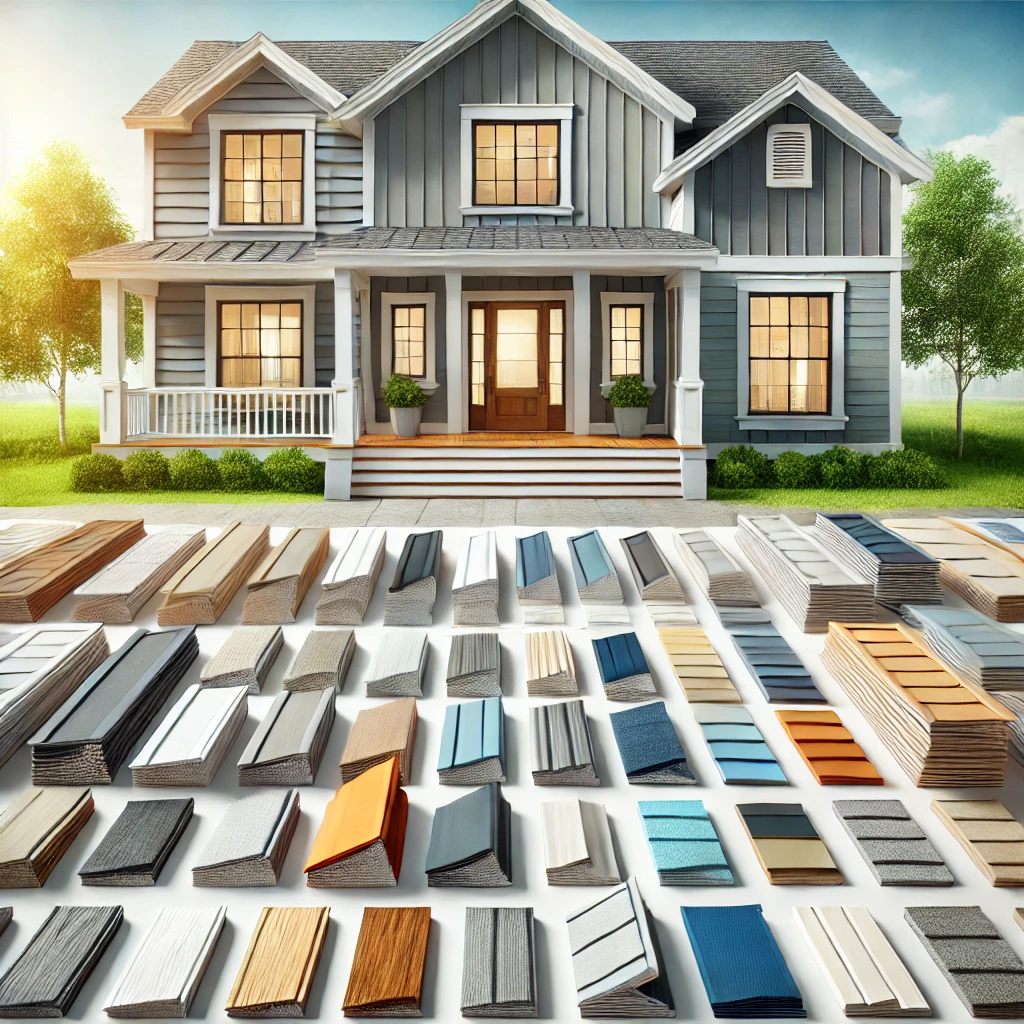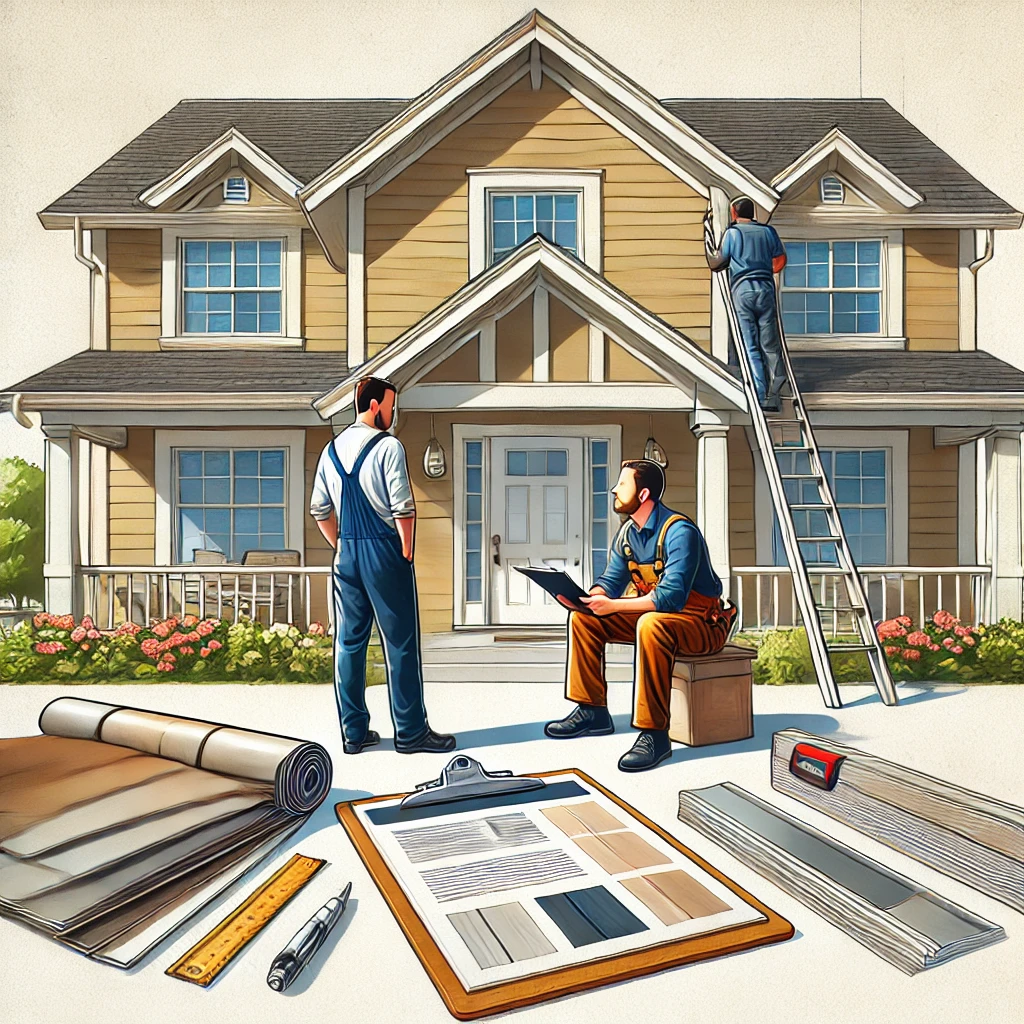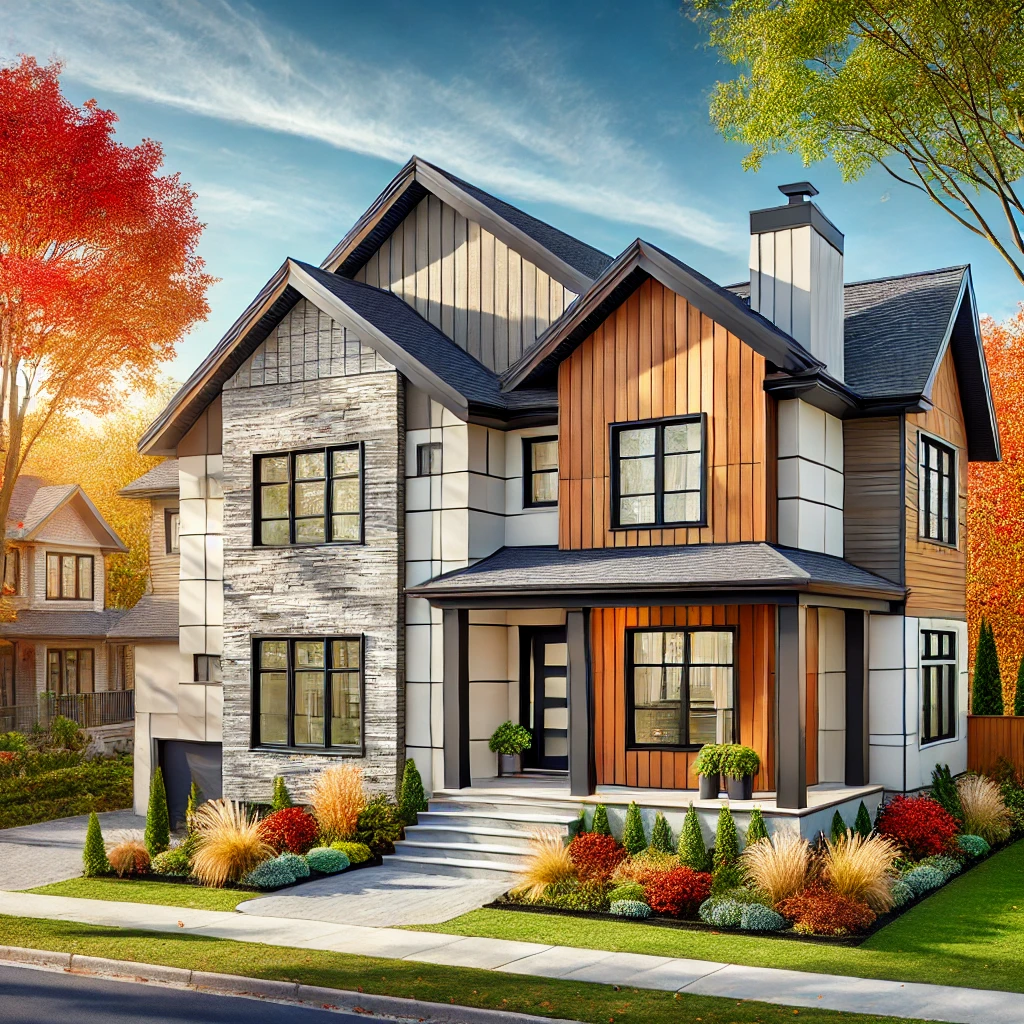As a homeowner, maintaining your property’s exterior is crucial to its appearance, value, and, most importantly, its protection. One of the most significant elements of your home’s exterior is the siding, acting as the first line of defense against the elements. However, like anything else, siding wears out over time. Identifying early signs of deterioration can save you from costly repairs, improve energy efficiency, and elevate the look of your home. In this article, we’ll walk you through the Top 5 Signs It’s Time to Replace Your Siding, giving you the knowledge to protect your investment and keep your home looking its best.
1. Visible Cracks, Warping, or Rot
The most noticeable and immediate sign that it’s time to replace your siding is the presence of visible cracks, warping, or rot. Damaged siding compromises your home’s structural integrity, leaving it vulnerable to moisture, pests, and harsh weather. Over time, moisture can seep through cracks and lead to mold or rot inside your walls, which may cause structural issues and require expensive repairs. If you spot large sections of cracked or warped siding, it’s time to consider a replacement.
Signs of Warping
Warping occurs when siding material deforms, often due to prolonged exposure to heat or moisture. If you notice your siding bending outward or creating gaps, it may no longer be securely attached to your home.
How to Check for Rot
Wood siding is particularly vulnerable to rot. Perform a simple inspection by pressing the siding with a screwdriver in suspected areas; if the material feels soft or crumbles under pressure, it has likely succumbed to rot.
2. Increased Energy Bills
A sudden spike in energy bills can often be traced back to problems with your home’s siding. When siding ages, it loses its insulation properties, allowing drafts and air leaks to enter your home. Poorly insulated siding places an extra burden on your heating and cooling systems, which leads to higher energy consumption and costs. Replacing old siding with modern, energy-efficient materials can help reduce heating and cooling costs by up to 20%, as the new insulation keeps your indoor environment more stable.
Common Culprits of Energy Loss
- Cracks and Gaps: Tiny openings in siding allow cold or hot air to leak in, causing your HVAC system to work overtime.
- Outdated Materials: Older siding materials may lack insulation, while modern options like insulated vinyl or fiber cement siding can provide much better energy efficiency.
Quick Test for Air Leaks
Conduct a simple test by placing your hand along walls on a windy day. If you feel a noticeable breeze, it may be time to replace your siding to improve your home’s insulation.
3. Fading or Peeling Paint
If your siding’s paint starts to peel, fade, or develop blisters, it’s an indication that the material underneath is deteriorating. While it may seem like a cosmetic issue, fading or peeling paint often points to deeper problems with the siding’s condition. Paint generally lasts about 5 to 10 years on well-maintained siding. If you find yourself repainting more frequently, the siding may no longer be performing as it should.
What Causes Fading?
Sun exposure is the most common cause of faded siding, especially in regions with intense sunlight. Over time, UV rays can weaken the siding, making it less resistant to moisture and weather damage. If you notice a consistent, uneven fading across your home’s exterior, it may be time for a replacement.
The Cost of Repeated Painting
Repainting siding frequently is not only time-consuming but also costly. Instead of repainting every few years, investing in new, durable siding can save you money in the long run.
4. Growth of Mold, Mildew, or Fungus
Mold, mildew, or fungus growth on siding can indicate excess moisture trapped beneath the surface. Mold is not only unsightly but can also pose health risks if it infiltrates your home’s interior. Mildew or algae growth on the exterior surface may just require cleaning, but if the growth recurs after cleaning or is widespread, the underlying siding may be failing to prevent moisture infiltration.
How to Spot Mold and Mildew Issues
- Check the Bottom Edges: Mold and mildew often begin to grow on the bottom edges of siding, especially in humid or rainy climates.
- Look for Black or Green Spots: If you notice dark spots, green patches, or a slimy texture, it’s time to investigate further. Persistent growth often points to internal moisture, which can damage the structure of your home over time.
Health and Structural Risks
If mold penetrates your siding, it can eventually reach your home’s framing, leading to rot and severe structural damage. Addressing mold early by replacing affected siding can help prevent costly repairs down the line.
5. Bubbling or Blistering
Bubbling or blistering siding is a clear sign that moisture has become trapped between the siding and your home’s walls. This issue can occur with vinyl, wood, and fiber cement siding when the material no longer effectively repels moisture. While bubbles or blisters may appear small at first, they can expand over time, leading to larger structural issues.
Why Does Bubbling Occur?
- Inadequate Installation: Improper installation techniques can create gaps where moisture can seep in, causing the siding to blister or bubble.
- Aging Siding: As siding ages, its ability to repel moisture diminishes. If bubbling or blistering is widespread, it’s likely due to the natural breakdown of the material.
Risks of Ignoring Bubbling Siding
Ignoring these signs of water damage can lead to major issues, including mold, rot, and costly repairs to your home’s structure. If you see large sections of bubbling or blistering siding, it’s time for a professional assessment.
Choosing the Right Siding Material for Your Replacement

Now that you’ve identified signs that it’s time for a replacement, selecting the right siding material is crucial. Each material offers distinct advantages based on durability, aesthetics, and energy efficiency. Here are some popular options:
Vinyl Siding
Vinyl siding is known for its affordability, versatility, and low maintenance requirements. It’s resistant to moisture and does not require painting, making it an excellent option for budget-conscious homeowners.
Fiber Cement Siding
Fiber cement siding offers high durability and excellent fire resistance. It’s also more resistant to pests and extreme weather. While it may come at a higher price, fiber cement can offer long-term value due to its durability.
Wood Siding
Wood siding is a classic choice, providing a natural look that many homeowners love. However, wood requires regular maintenance, including staining or painting, and may be more susceptible to rot, mold, and pest infestations.
Insulated Siding
Insulated siding offers extra thermal insulation, making it an ideal choice for energy-conscious homeowners. This siding type can help reduce energy costs while offering improved durability.
The Importance of Professional Installation
The quality of siding installation can make or break the lifespan and effectiveness of your new siding. A poorly executed installation can lead to gaps, poor insulation, and increased risks of moisture infiltration. Hiring a professional installer ensures that the job is done correctly, preventing many of the issues that lead to premature siding failure.
DIY vs. Professional Installation
While DIY projects can save money upfront, siding installation is a complex task that requires specialized knowledge. A professional installer will be able to address any underlying structural issues and ensure your siding is securely fastened, providing peace of mind and long-lasting results.
Benefits of Replacing Your Siding
Replacing worn-out siding offers a range of benefits, from improving your home’s energy efficiency to enhancing its curb appeal. Here’s a quick look at some of the primary advantages:
- Energy Savings: New siding can reduce drafts and improve insulation, lowering energy bills.
- Increased Property Value: Replacing your siding can add significant value to your home, making it more attractive to potential buyers.
- Improved Aesthetic Appeal: Fresh siding instantly boosts curb appeal, giving your home a modern, well-maintained look.
- Enhanced Durability: New siding materials are designed to withstand the elements better, reducing the likelihood of moisture and pest damage.
Final Thoughts: When It’s Time for New Siding, Don’t Wait
Siding is more than just an aesthetic feature—it’s a critical protective layer for your home. Recognizing the signs that it’s time to replace your siding can help you avoid costly repairs, improve your home’s energy efficiency, and increase its value. If you’ve noticed any of the top 5 signs discussed here—cracks, warping, fading paint, mold growth, or bubbling—take action sooner rather than later. Consulting a professional for an inspection and replacement options can save you from larger issues down the road, ensuring that your home remains safe, efficient, and beautiful for years to come.
When it’s time for a siding replacement, prioritize quality materials and professional installation to make the most out of this valuable investment.


